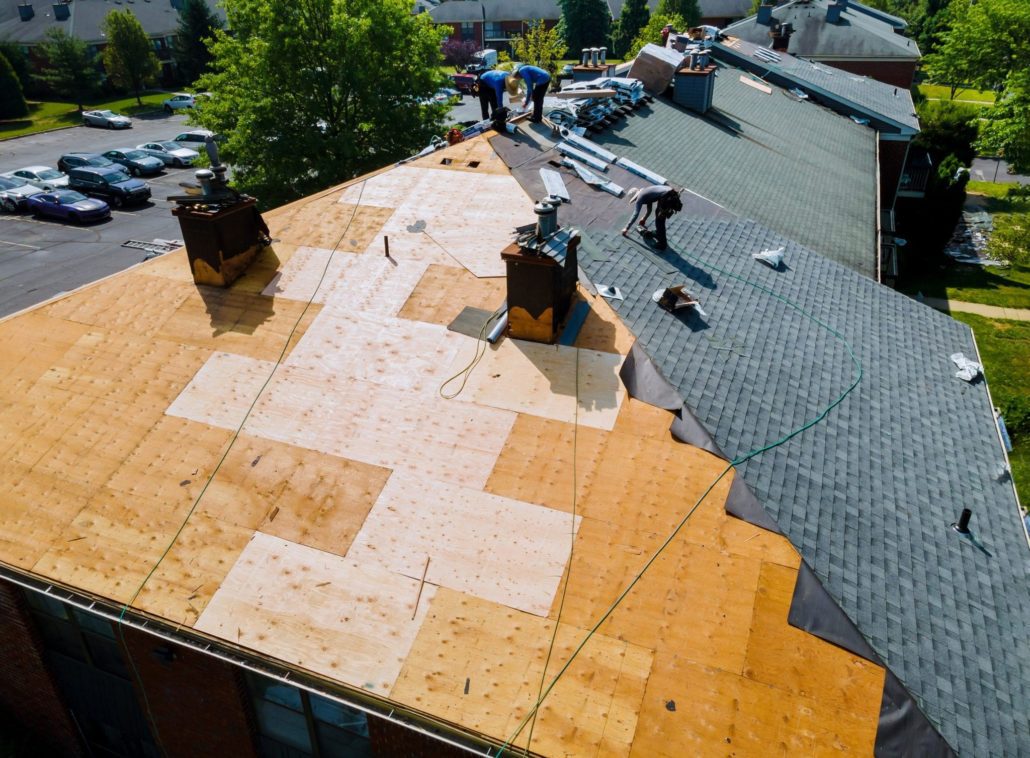Do I really need a whole roof replacement or just a roof repair?


Do I really need a whole roof replacement or just a roof repair?
Imagine the surprise of being told you need an entire roof replacement when you hadn’t expected to hear it. The roof only had a small amount of moss growing on a section of it, so why would a complete replacement be needed when it’s only in one spot? Moss and plant growth is normal, isn’t it?
The truth is, 9 out of 10 contractors will tell you that you need a full roof replacement because a lot of times, they can’t see where the leak is coming from, so it’s easier to recommend replacing everything instead of repairing. But this doesn’t always have to be the solution and you shouldn’t have to spend the money if you don’t need to.
Once a year, we typically see our doctors for a routine physical, this helps us stay on top of, or prevent, any health issues that might come up. The same applies to your roof. By being proactive and having your roof inspected once a year, any issues that could easily be replaced can be spotted sooner rather than allowing it to worsen over time and resulting in needing the replacement. Some roofing companies will even offer free inspections, so why not take advantage of that?
So, what sort of things are looked at and what might require a whole roof replacement?
There are two parts of a thorough inspection that should be executed. The first part is the obvious exterior inspection of the roof itself. Some things that might be signs of concern are:
BAKED, WAVY or MISSING SHINGLES.
When the edges of shingles are curled, warped and wavy looking (appearing like fried bacon on the top of your house). This happens when the shingle no longer reflects heat due to the loss of granules on the surface and becomes delaminated and causes the shingles to fall apart and become loose. This exposes your roof to the elements, which will weaken and create a lot of damage if left untreated for too long.
NAIL POPPING
The nail holding down the shingle pops up out of the plywood and lifts the shingle up. This is a sure sign that water is penetrating the nail hole and heat is allowing the nail to work its way out. Again, water is getting into your roof and causing some sort of damage.
STAINING OR ALGAE GROWTH
Remember thinking that the appearance of moss and plant growth on your roof was normal? It really isn’t–The growth forms from shingles absorbing water instead of repelling it as it should. This allows spores to seep into the roof and to start to grow. The rooting system from the growth will break down the shingle and allow water to work straight through the roof to the underlayment creating damage quickly.
The second part of an inspection should include looking at any possible interior damage that would be visible in the attic. Some things that might be signs of concern are:
GROWTH, WATER STAINING, AND WOOD ROT
If there are water stains or anything that appears like mold, it is obvious that water is getting in somewhere and causing damage. Eventually, (and if you have a lot of ice damming on your roof), this can cause the wood to rot, which will result in possible major damage if left for too long.
CAT EYES
Staining around nails (looks like eyes of a cat) could be from lack of ventilation which will create moisture to collect around the metal. If it is specified to an area, it’s coming from a leak in that region. The staining is an indication that the wood is wet/got wet, which will cause rot.
SAPPING AND CRACKING
Have you ever seen the beams and rafters in your attic, look like they are bleeding sap? This is an example of sapping. It happens usually due to poor ventilation in the attic, and the heat isn’t allowed to escape properly. This will cause the wood to weaken, lose its pulp content, become brittle and then eventually crack. Any cracked rafters will need to be repaired to become load bearing again, in order to support your roof.
Conclusion
If your contractor tells you they found any of these issues, some questions you might want to ask are:
Is the issue clear and diagnosed to a specific area, or is it in multiple locations?
Can the leak be localized to one/several areas?
Are the issues in areas such as the pipe boot, chimney flashing, ridge vents and caps?
If the shingles are Architectural shingles, are they under 10-15 years old?
If the answer is yes to most of these questions–you may be able to get away with just a repair.
You could always ask for a cost estimate for the repair and compare it to the cost of a full replacement and see which option makes the most sense for you.
Whatever the case may be, make sure you find a reputable contractor that will offer a lifetime warranty on their work (repairs or replacement). This will give you the peace of mind that you won’t need to address the same issues over and over again.



